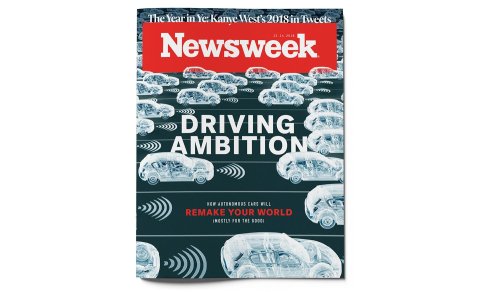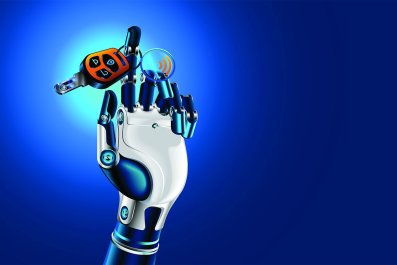Rush hour in Singapore, a crowded island city of nearly 6 million people, is much like rush hour in almost every major city in the world: a living hell of clogged highways and stressed-out drivers. The dilemma, if left alone, will only get worse if, as is expected, Singapore adds a million more residents in the next decade. But city planners have no intention of leaving it alone. They have in mind a solution that is radical and all-encompassing: to replace car ownership with ride-sharing.
The key ingredient in this plan is the emerging technology of autonomous vehicles (AVs)—cars and shuttle buses that, through the miracle of artificial intelligence, can drive themselves with no human at the wheel. Imagine replacing molar-grinding rush-hour gridlock with a choreography of driverless Ubers whisking people to and from work.
To realize this future, Singapore is making farsighted investments in research and infrastructure and rewriting its transportation policies and regulations. It built a sprawling test track, complete with fake buildings, steep hills and a rain machine. It is working with 10 different companies on plans to roll out fleets of driverless cars.
The municipal agency that keeps a tight regulatory grip on cars and roads in Singapore—it currently charges commuters nearly $15,000 a year for the privilege of owning a car and using the roads during rush hour—recently removed the requirement that cars have human drivers. All new residential developments must now abide by rules that both accommodate self-driving vehicles and discourage car ownership: narrow roads, special road markings, gentler curves, specific curb heights and fewer parking spaces.
The first driverless buses and shuttles hit the city's streets in November. If all goes well, a large fleet will soon be cruising the roads, calculating their routes on the fly based on where they need to pick up passengers and drop them off. Then a fleet of AVs will be deployed to work nights, sweeping the streets and delivering packages. "The goal here," says Niels de Boer, who heads autonomous vehicle research for the Energy Research Institute at Singapore's Nanyang Technological University, "is to make having your own car completely unnecessary by 2030."

At the dawn of the 20th century, the automobile was heralded as a way to free cities from the scourge of horse manure. Cars delivered on that promise, and they made us a far more mobile society. But they also stuck us with a slew of pervasive problems that haunt us today: urban blight, suburban sprawl, congestion, a rich-poor divide, a health-crushing lack of physical activity and enough pollution to upend the Earth's climate.
If Singapore exemplifies the promise of driverless cars to alleviate the mistakes of the past 100 years, most cities seem positioned to once again allow technology to overwhelm them. For instance, heavily congested New York City lacks Singapore's ability to focus on a transformative vision and follow through with regulatory muscle. Only a few years ago, a bid to impose road tariffs on cars that enter its perpetually traffic-clogged downtown failed. The Big Apple currently has no testing program in place for driverless cars—General Motors was planning one for 2019 but canceled it when the City Council raised concerns about safety. Some European countries and China are taking steps to prepare for AVs, but not one major U.S. city has introduced new traffic or development laws intended to boost AVs or push drivers to use them, as Singapore has.
If cities don't get their development acts together soon, driverless vehicles will likely make traffic far worse in the coming years. As driverless car services become more convenient and affordable, they will lure more people onto the road. The vehicles themselves will drive slowly and carefully, waiting with infinite patience for the car up ahead that is trying to parallel park for the third time or the pedestrians who play chicken in the crosswalk. Drivers will swerve to avoid the lumbering vehicles and cut them off. Road rage will rise.

Just as Amazon rode roughshod over retail and Facebook and Google torpedoed publishing and the media, driverless cars could soon transform transportation in ways we may or may not like. We could watch passively as congestion, stagnation and sprawl get worse. Or we could choose to invest in an AV-inspired renovation of cities and suburbs, including a vast network of sensor-rich, high-speed smart roadways.
The coming of self-driving cars will push us in one of those two directions, depending on how public and private forces orchestrate—or don't—the integration of AVs into our towns and cities.
'Massive Deployments' in Two Years
Whatever we do, we need to do it quickly. A confluence of new technology and new business models has made AVs possible and practical. Advances in artificial intelligence have produced software that can recognize every road feature and object, allowing vehicles to smoothly and precisely navigate through them. And the software learns, getting more adept at recognition and control with each mile driven.
Meanwhile, the advent of ride-hailing services like Uber and Lyft has paved the way for affordable access to self-driving cars. Most people won't be able to spring for their own private AV, but everyone will be able to afford a ride in one. Pilot versions of AV fleets have sprung up not just in techno-centric, innovation-embracing American cities like Boston and San Francisco but also in Dallas, Las Vegas, Detroit and Pittsburgh, in partnership with a range of pioneering AV companies with names like Transdev, Drive.ai and Navya. Columbus, Ohio, not normally a hotbed of pioneering high-tech development, has already pulled together $140 million to invest in driverless fleets. It's expected that by the end of 2019, the number of AVs in the United States will reach the tens of thousands, with hundreds of thousands expected in the next few years.
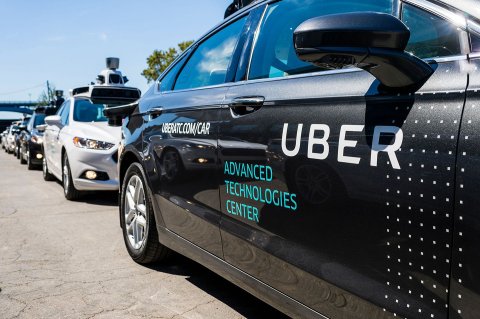
Waymo, the self-driving car company owned by Google's parent company, Alphabet, already has 600 self-driving vans in Phoenix and more in 24 other test cities. It recently became the first company allowed to place AVs with no human backup driver on California's roads. It took Waymo AVs six years to rack up their first million miles; they now have 10 million under their seat belts and are rolling up another million every month. The company has 82,000 additional self-driving Chrysler Pacifica–based
minivans ready for deployment the minute cities give them the green light, along with a coming fleet of 20,000 Jaguar self-driving I-Pace SUVs primed to run a million trips per day within two years.
Ford, GM, Volvo and BMW are all racing to catch up, and so are the AV startups. Optimus Ride, one of the companies running pilot programs in Boston, won't release details about pending contracts and approvals, but CEO Ryan Chin claims the commitments are huge. "We've got a big pipeline of agreements outside of Massachusetts we're getting ready to fulfill," he says. "They'll be massive deployments happening in two years."
As those services are rolled out, the technology will likely pick up momentum. It will bring businesses closer to their customers by making goods and services more accessible. Shops and restaurants may choose to provide customers with free driverless transport; Walmart is piloting a program in Chandler, Arizona, to bring customers to its store in Waymo robocars. Toyota plans to make driverless vans that can be configured into a mobile version of any businesses—Pizza Hut and Domino's have already struck deals with Toyota and Ford. Ride-sharing services themselves could help businesses calculate how best to serve their customers by providing data about where they go to spend their money.
A Billion Parking Spaces
The potential of driverless cars to transform our lives for the better is difficult to overstate. The shift to a driverless transportation system could free people up to conveniently hop between their bucolic rural homes and the traffic-free, highly walkable city. In this vision, everything from groceries to medical services will be whisked to our doorsteps at lower costs. Parking lots and even some roadways will be reclaimed as clusters of shops or homes, or as community green spaces.

All-electric cars will help save city dwellers from pollution and greenhouse gases. AVs could help eliminate the 7 million collisions that Americans get into every year and that have taken 650,000 lives since 2000. And they will help U.S. drivers take back the combined 30 billion generally unproductive and not especially pleasant hours they spend behind the wheel each year, much of it stuck in traffic or hunting for parking.
About 30 percent of all the land in U.S. cities is taken up by parking lots or garages. But driverless cars don't need to be parked—they can drop off a passenger and roll right on to the next pickup. "There are more than a billion parking spaces in America," says Nico Larco, a professor of architecture and environment at the University of Oregon, who also co-directs the school's Sustainable Cities Initiative. "If AVs are doing all the driving, we can get rid of 90 percent of them."
The space that would be freed up could lead to an urban renaissance, transforming cities into cleaner, quieter, more pleasantly strollable places. "Urban planning will change around the AV," says Tracey Zhen, president of pioneering urban-car-sharing service Zipcar, acquired by Avis in 2013.
Some developers are already laying the groundwork for these kinds of changes. One hot trend is for builders to design parking facilities to be easily transformed into business or residential space. In car-crazy Los Angeles, which currently devotes well over 200 square miles of land to parking, a new 4,500-space garage at the airport and a 1,000-space garage in the Arts District are both being built to be convertible. That's happening in Cincinnati too, with other cities studying the results. One study by an urban research group predicted AVs would start to transform New York City by 2040, and perhaps sooner in Boston and San Francisco.
Driving—or, rather, riding—through a well-planned urban center would be more pleasant and efficient. Information would be relayed to AVs from the streets so they can find the fastest routes and avoid or coordinate with other cars. "The whole city will be smarter, with cameras and other sensors everywhere," says Ford Motor Co. Chief Technology Officer Ken Washington.
Daniel Piatkowski, an architecture professor at the University of Nebraska at Lincoln who studies the impact of AVs on regional planning, says the technology will counter one of our greatest modern woes: congestion. "AVs will take full advantage of the complete road network," he says, "moving along quickly even when they're bumper-to-bumper."
No More Crappy Strip Malls
When it's time for commuters to get home to the suburbs, they'll transfer from small, nimble, super-smart AVs designed for narrow city streets to larger, faster, shared-ride vehicles. How might AVs transform suburban life?
If cities are able to take advantage of AVs to become walkable, high-mobility cores of commerce and leisure, the prices of homes in and around these areas will rise, pushing more commuters to look for affordable homes farther outside the city.
That's a scary thought to city planners, who worry about the "sprawl" syndrome, in which people move farther away from the city and buy cars to get around, which leads to more roads, parking lots and strip malls. In a smarter scenario, AVs could solve this problem, even as they allow people to live even farther from urban centers. A switch from owned cars to driverless ride services would allow towns and private developments to get rid of their ubiquitous parking lots and roadside parking, as well as scale back on roadway development. Developers could take advantage of the newly available space to turn some of the sprawl into mini citylike villages dense with a range of attractions.
Larco calls these oases "semi-urban nodes" and a huge opportunity for transformation. "Picture a crappy strip mall with a huge parking lot next to a small row of stores," he says. "Why not rip up that parking lot and put in all kinds of amenities that build off each other, like office buildings, restaurants, apartment buildings?"
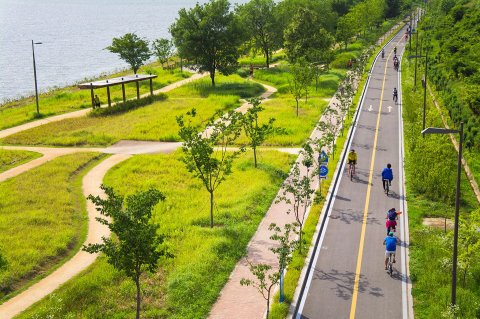
More and more people would choose to live at or around these nodes, walking between their daily activities, and hiking or biking to surrounding networks of greenways. And the suburban-based AVs, whether privately owned or part of a ride-service fleet, don't need to be kept near the homes that will rely on them. They could sit outside town under solar panels, charging until summoned.
Like suburbs today, nodes that are only 15 to 30 miles out from urban cores could reach a price out of reach for most. But AVs will change the meaning of "commutable" distances. "There's no reason a driverless car can't travel at 120 miles per hour down the highway, because their response time is so fast," says Tracy Hresko Pearl, a professor at the Texas Tech University School of Law who studies risk, regulation and tort law with regard to driverless vehicles. "You could give them a few lanes to themselves, and human drivers can go 55 in their own lane." At those high speeds, areas 100 miles outside the city become commutable. That would create opportunities to develop more affordable nodes in rural regions closer to nature. "We'd see the rise of the 'supercommuter,' traveling into the city every morning from what would have been hours away," says Piatkowski. "But in a driverless car it would be just an hour at most."
That might inspire tens of millions of people to resettle from crowded regions like the Northeast to less densely populated states like Colorado or Washington, where settling in rural beauty doesn't put them out of AV-enabled reach of major, attractive cities. AVs could even make long-distance leisure and business travel more convenient and affordable, says Marten Levenstam, Volvo's senior vice president of product strategy and business ownership. He notes that many people might prefer spending three or more hours relaxing in a driverless car hurtling smoothly down the highway to having to deal with all the hassles of air travel. "The car could become an overnight sleeper car for long distances," he says, "and you'd wake up at your destination."
The Hell Scenario
But AVs could just as easily expand sprawl as conquer it. As it stands now, most towns' zoning laws work against the formation of walkable nodes by prohibiting mixing homes and businesses, and no one seems in a hurry to change those laws. If suburbs remain car-centric and are devoid of appeal outside of affordable houses, then cities will become even more powerful draws as the only centers of work, commerce and leisure. Commuters might simply trade in their current cars for self-drivers to make trips to the strip mall, schools and office parks more convenient.
And what if they rely on AVs to extend their commutes into more distant exurbs just to give themselves a shot at ever-bigger houses, yards and garages, instead of gravitating to walkable, dense nodes? Then the unappealing, unstimulating, unwalkable sprawl around cities could stretch unbroken for 100 miles. "Our big concern is that AVs create hypersprawl," says Kris Carter, who heads technology-related traffic policy for the Boston Mayor's Office. "We'd see more people commuting into Boston all the way from New Hampshire and beyond."
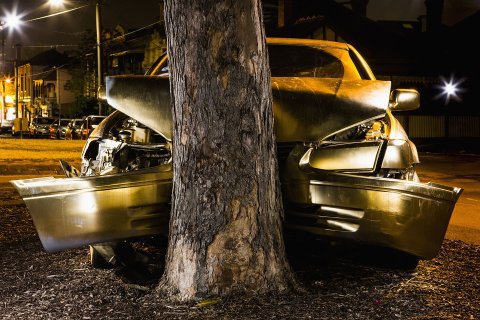
And there are many more attending downsides. Not everyone would necessarily benefit from a trend toward suburban nodes, for example. The value of homes and commercial properties in less-interesting suburbs that aren't particularly close to either cities or nodes could plummet, warns Larco. "Those middle areas that don't offer any buzz or amenities, like dense development or beautiful surrounding scenery, will be hit tremendously hard," he says. Not only will demand for land there drop, he explains, but it will happen just as countless parcels of land are dumped onto the market, thanks to AVs making parking lots obsolete.
Worse still, towns might suddenly be robbed of some key sources of revenue: traffic and parking violations, as well as fees and taxes on car registration and gas. In America's 25 largest cities, these revenues amount to $5 billion; although the numbers are far smaller in most other cities and towns, they are equally dependent on that money.
Another dilemma: When driverless cars start flooding the streets in the next two years, as now seems likely, they will most likely immediately add to traffic congestion. Driverless trips are expected to cost about a quarter or less per passenger mile than an Uber ride today. Once riders get over their initial concerns about a robot behind the wheel, most will like the price, privacy and reliability. They'll take more trips, and many will switch to cars from subways and buses, further increasing traffic. Some people will choose to drive their own cars less often, which will help, but not enough: Studies suggest that ride services like Uber add nearly 3 miles of road travel for every one they eliminate, thanks to their greater convenience. Cheaper services will likely follow the same pattern.
Driverless cars will initially have to share the road with human-driven cars, too, which means that futuristic image of synchronized self-driving cars flying down the streets bumper-to-bumper at high speeds will have to wait. Since collisions could be catastrophic to the AV industry, the cars will be supercautious, and drop-offs and pickups in the city would become a nightmare during heavier traffic hours, as hordes of AVs crawl, halt and jockey along the busiest blocks to find a spot along a curb. "That's not a trivial problem," says Larco. "Traffic lanes weren't designed to handle tens of thousands of cars converging on the same places."

The real disaster scenario, planners say, is if millions of car owners decide to trade in their current wheels for their own self-driving cars. AVs at first will be deployed as fleets of ride services, but Tesla and GM already offer quasi-self-driving cars for $50,000 to $75,000 that can handle less-challenging highway driving, and Volvo, Mercedes-Benz, Audi and others aren't far behind. Price tags for fully self-driving cars will be up in the six figures, predicts Don Elliott, a director with Clarion Associates, a city planning consultancy, so the market for them won't be huge.
But even a modest number of private self-driving vehicles could clog city streets: cruising all day long; picking up groceries; ferrying the kids between school, sports and home; or even just killing time, driving loops until their owners are ready to be picked up for their evening commute.
More critically, unless cities take steps to include poorer residents in the AV revolution, they will likely be left out. Many lower-income neighborhoods suffer from a lack of access to transportation options, with many dependent on multiple buses to get to work or school. Since those neighborhoods will provide a lower concentration of riders who can afford the trips, car services may neglect them. "If we have a technology revolution in transportation and it's not shared with all parts of the city, we'll have failed," says Boston's Carter.
AVs won't just affect traffic—their impact will wash over the entire economy. Large fortunes have been made on parking lots and garages, and those owners will likely fight any losses. The most obvious impact, though, will be on jobs. There have long been predictions of a bloodbath when AVs displace a rapidly growing percentage of the 3.5 million or so American workers who drive a car, truck or bus for a living. Another million people drive at least part time for Uber or Lyft, and nearly a half-million work in public transit. Five million more people are employed in vehicle-related non-driving jobs, such as car salespeople, insurance agents and truck-stop waiters.
In all, autonomous cars could put about 10 million people in the U.S. out of work. Once workers see the ax falling, they could mount a backlash, pressuring local, state and federal governments to protect them in ways that could stall the deployment of driverless vehicles for years.
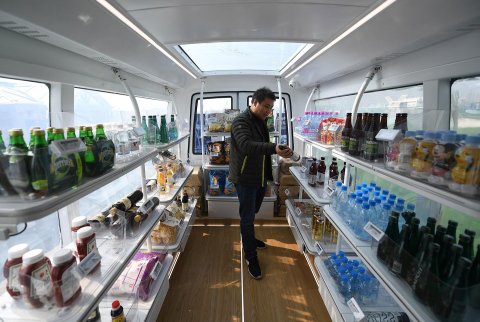
Dude, Where's My Car?
The future will likely start with "microtransit vehicles. Vans or minibuses comfortably carrying six to 12 passengers could serve as a form of public transportation, without the billions of dollars of investment required for new subway or commuter-rail lines, and at a fifth of the per-passenger-mile operating costs. They would be far more convenient and efficient than buses; advantages would include creating new stops and faster routes on the fly in response to where riders want to be picked off and dropped off. Putting just two passengers into a driverless vehicle, instead of one, halves its impact on traffic. The challenge, of course, will be attracting the passenger who wants control of their ride.
City planners largely agree that the only way driverless cars will be able to deliver on their promise to transform our cities and suburbs for the better is if passengers get over their need for privacy. Lower fares always help; eliminating the cost of a driver will make shared services cheaper even than today's buses. To make ride-sharing yet more appealing, AV services could offer to match riders according to their social compatibility apps—so that, for example, chatty types are picked up by one vehicle, catnappers and readers by another. Perhaps bankers ride with bankers and artists with artists.
Fancier versions of ride-sharing vehicles could provide each passenger a tiny, private, partitioned compartment, or a double compartment with facing chairs for meetings. Those willing to put up with advertising pitches might have their trip costs subsidized. An additional incentive to ride-share could come from providing a tax rebate, or simply charging a "congestion tax" to those who drive alone.
What would really do the trick, says Texas Tech's Pearl, is giving shared driverless vehicles their own dedicated high-speed lanes in and around the city, much like the lanes for high-occupancy vehicles on many highways, leaving solo vehicle drivers to stew in traffic. "When people are crawling down the street in a car by themselves and they see other vehicles flying by," she says, "they'll switch."
Cities serious about wringing real transformation out of the AV revolution will eventually have to ban human drivers altogether on the city's busiest roads. If AVs are free from having to deal with unpredictable, emotional humans, they will be able to go faster and pack themselves more tightly onto the roads for higher traffic flow.
Much of what happens to driverless cars in the coming years and decades will be shaped by government policy, whether it addresses liability, the way cities and suburbs grow, or how to separate human drivers from AVs. Will cities have the wherewithal to impose regulations that ultimately spell the end of car ownership? Would drivers put up with it?
Some European cities are already considering banning private cars from their centers, says Optimus's Chin. China's autocratic leaders might have an even better chance. But banning driving could be a tougher sell in the U.S. "You almost need a constitutional amendment to take away people's cars here," says Carter.
The danger of inaction is that AV technology turns out to be a sort of Trojan horse, promising new convenience and another leap in mobility but adding to already intractable problems. To create a better future, cities and suburbs around the world need to follow Singapore's lead and take control of the technology, and they need to do it soon. Without planning and investments up front, it will take years, even decades, of headaches to get to a driverless nirvana—if we can get there at all. "No matter what we do," says Larco, "there will be unintended consequences that could have dire effects if we're not prepared."
Piatkowski agrees, but he worries we'll flood the streets with AVs first and worry about policy later, after it's too late. "That's what happened in 1915, when we first got automobiles. Nobody thought things through, and we ended up with sprawl," he says. "Fixing policies is hard work."
Maybe we'll do better this time. If not, we may soon be pining for the days when one of our worst transportation problems was manure.
